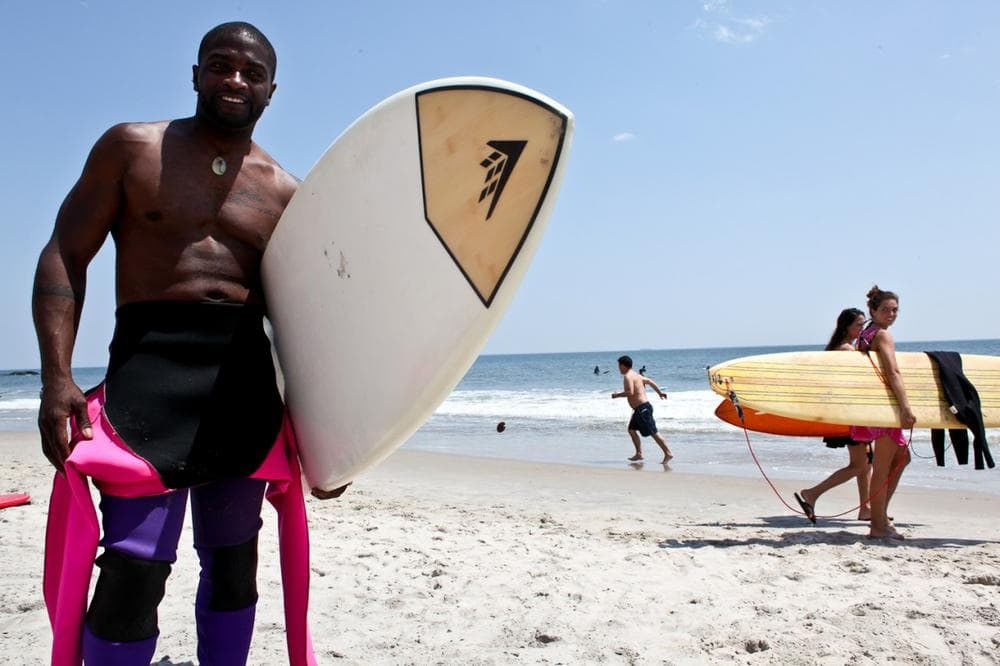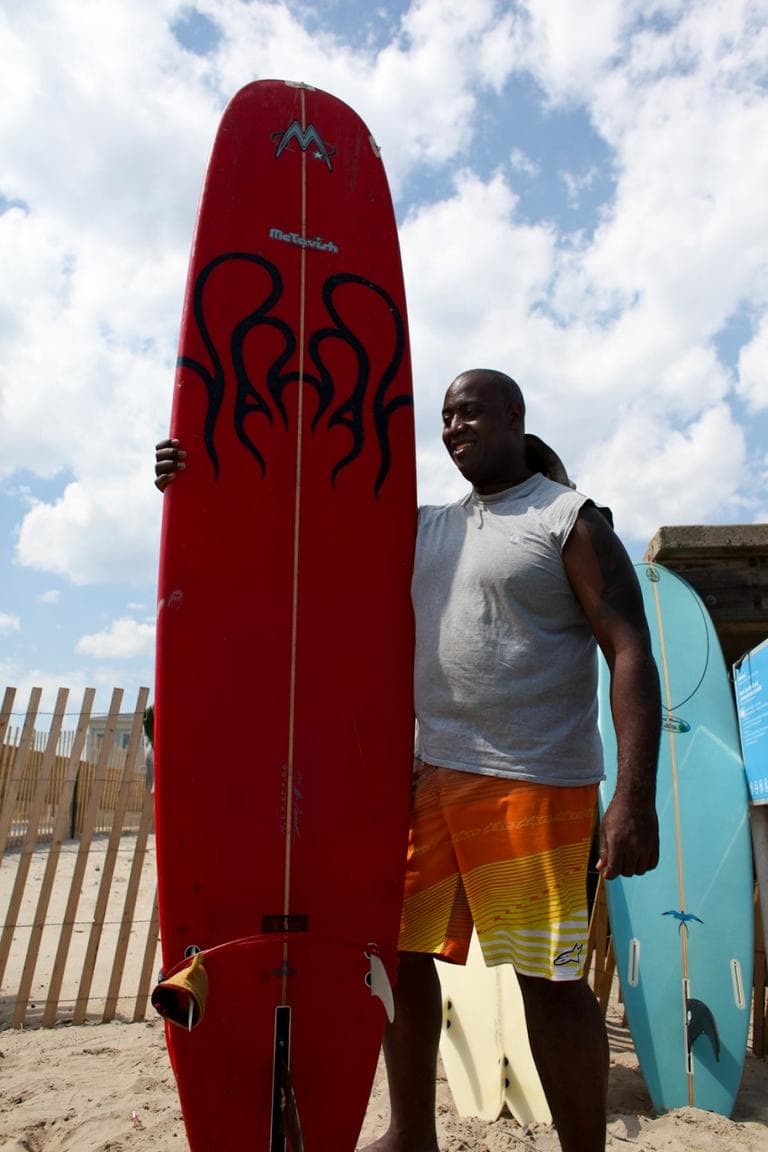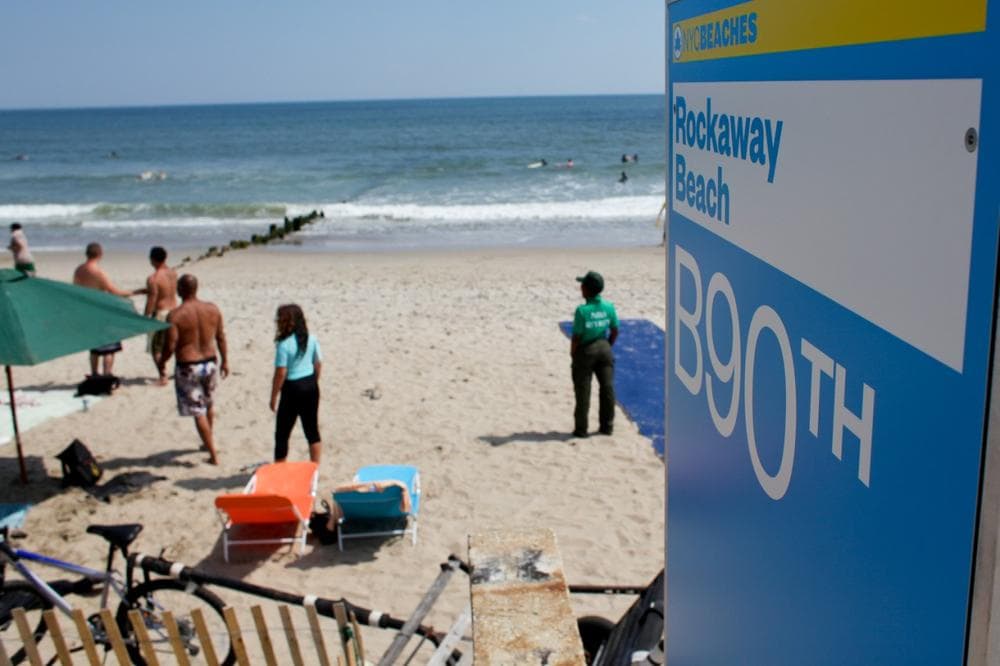Advertisement
Feature
African-American Surfers Challenge Stereotypes
Resume
Lounging in a beach chair with his feet firmly planted in the sand, soaking in the sun one hot Saturday, was BJ.
“My name is Brian--B.J. James, also known as the nautical negro,” he said.
He's been surfing at Rockaway Beach since 1997. He’s even written a book about his experiences on the water.
“It was tough in the beginning — lot of racial epithets hurled out in water, lot of arguing — but me personally, I let them know I wasn't going for it,” he said. “They got a problem we can settle it on the beach.”
But like any sport, if you do it well, you earn respect.
“People, they might look at you at first that I’m a black surfer, but then it’s just a matter can you surf,” he explained. “Surfers for the most part don’t care what you are, as long as you’re not gong to be in the way.”
BJ is a far cry from the commercial image of the shaggy-haired, bronzed beach bum. The stocky, bald 48-year old from Westchester, N.Y. is one of the recent pioneers of a growing black surf scene. While black surfers remain a relative rarity in America, that’s not the case around the world according to Scott Hulet, editor of The Surfer’s Journal.
“Papua New Guinea, the Caribbean, which would include Barbados, Jamaica, British Virgin Islands — those are black surfers through and through,” he said. “And highly accomplished ones.”
Hulet said people in Ghana, Senegal and Angola have been riding waves on their stomach for centuries.

“So, the vibrant global black surf culture is historic and thriving,” he said. “Here in America, it’s still a very minute part of our overall constituency.”
Surfing’s popularity grew in California in the 1900s, but it wasn't until the 1940s when a black surfer named Nick Gabaldon broke the race barrier by surfing at the predominantly white beaches in Malibu.
“He’s the first documented black and Mexican surfer,” said Jeff Williams, the co-president of the Black Surfers Collective, based in Los Angeles.
“Nick Gabaldon used to enter the water at the Inkwell, at Bay Street in Santa Monica, and paddle 12 miles north in a prone position and surf the waves of Malibu in the late 40’s and early 50’s” Williams noted.
Gabaldon died at 24, trying to “shoot the pier,” or surf between wood pilings in the water. Yet he's still an inspiration to young black surfers like Jeff Williams. He says when he started surfing in Los Angeles 18 years ago there were only about six black surfers. Now, he says there are at least 500 in the area, and he meets a new black surfer everyday.
Frank Cullen is the head of the New York Surf School in New York. He says many of the new black surfers in the Rockaways come from gentrified parts of Brooklyn.
“A lot of it has to do with demographics and it seems to be more of a middle-class type of thing. So if you looking at Williamsburg and Greenpoint as a lot of African-Americans — they’re just coming out and just doing their thing.”
Over on the beach, surfer BJ said that unlike other sports that have long broken the race barrier — surfing remains out of reach for many black youth. He says his parents taught him to swim at a young age.
“It’s the opportunity,” he said. “That’s one of the only thing that separates us from our peers a lot of times is the opportunity, when people like Tiger Woods or the Williams sisters, their parents gave them the opportunity.”
Surfer Louis Harris came to the Rockaways seven years ago and said BJ inspired him to try surfing.
“And, I seen people surfing out here. And I was like wow, people surf out here, and then I saw BJ and I was like, wow black guy surfing? And they were all crowding around him like he was freaking Mick Jagger or something.”
The 41 year old personal trainer from Long Island has lived here ever since. Unlike BJ’s earlier encounters with racism, Harris said when he walks with a surfboard it is black people who confront him.

“The white people never say anything stupid to you, they’re always like, how’re the waves, good waves?” he said. “It’s the black people that say, ‘Black people don’t surf.-- Yo man, what you doing with a surf board man? Black people don’t surf.' I’m like, dude, are you kidding? I’ve been swimming for 35 years, surfing for seven and skateboarding for 17.”
Harris’ goal is to change those stereotypes, one kid at a time. He teaches surfing on the weekends.
“You get a lot of these black kids who never surfed before who get on the board and they just rip like that” he said. “And those are the kids that’s my mission this summer is to get a lot of African-American kids a lot of Puerto Rican kids who think, 'Oh that’s a white sport.' It’s not a white sport.”
While the Rockaways are no Santa Cruz, for many New Yorkers it’s the closest surf beach. With more than 35 percent of the Rockaway residents being non-white, that’s a lot of untapped talent.
This segment aired on September 7, 2013.